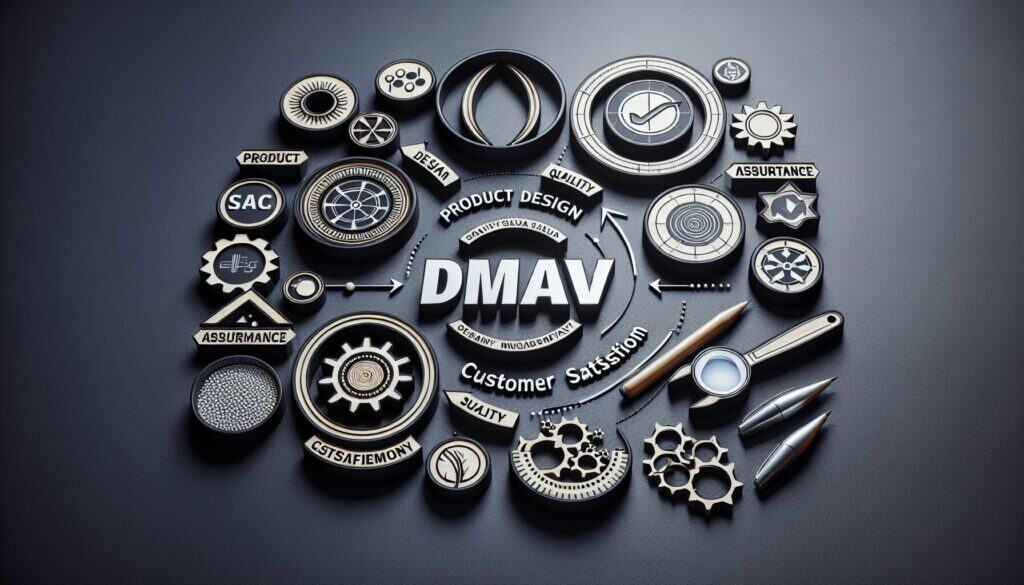DMADV (Define Measure Analyze Design Verify): a Six Sigma methodology used to design new products, services, or processes to meet customer requirements and business objectives with high quality.
- Methodologies: Customers & Marketing, Ideation, Product Design
DMADV

DMADV
- Continuous Improvement, Customer Experience, Design for Six Sigma (DfSS), Design Process, Process Improvement, Product Development, Quality Function Deployment (QFD), Quality Management, Six Sigma
Objective:
How it’s used:
- A five-phase approach: Define project goals and customer deliverables; Measure and determine customer needs and specifications; Analyze process options to meet customer needs; Design the process/product to meet customer needs; Verify the design performance and ability to meet customer needs.
Pros
- Focuses on designing quality in from the start; data-driven approach; aims to meet customer requirements effectively.
Cons
- Can be resource-intensive and time-consuming; requires a structured approach and skilled team members; may be overly complex for simple design tasks.
Categories:
- Lean Sigma, Product Design, Quality
Best for:
- Designing new products or processes, or redesigning existing ones, to meet customer needs with Six Sigma quality levels.
The DMADV methodology finds extensive application across various industries such as automotive, aerospace, consumer electronics, and healthcare, particularly when organizations seek to innovate or redesign products and services. It is commonly used during the initial phases of product development projects where the focus is on ensuring that customer requirements are met with high precision. Teams comprising product managers, engineers, designers, and quality control experts initiate this approach, collaborating closely to define project goals and customer deliverables in the Define phase. During the Measure phase, empirical data collection is emphasized, allowing teams to quantify customer needs and assess current specifications against those needs. When analyzing the available process options in the Analyze phase, teams utilize advanced statistical tools to evaluate feasibility and selection based on cost, performance, and quality metrics. The Design phase then involves creating prototypes or simulations, while the comprehensive testing in the Verify phase ensures that the final product not only meets but also exceeds customer expectations. This methodological approach significantly enhances product quality and customer satisfaction by embedding quality considerations early in the development process. It also minimizes the costs associated with rework and warranty claims, establishing a strong foundation for future innovations that adapt to evolving consumer demands. As such, DMADV serves as a framework for systematic decision-making where data-driven conclusions inform each phase, fostering a culture of continual improvement within organizations.
Key steps of this methodology
- Define project goals and customer deliverables.
- Measure and determine customer needs and specifications.
- Analyze process options to meet customer needs.
- Design the process/product to meet customer needs.
- Verify the design performance and ability to meet customer needs.
Pro Tips
- Utilize advanced simulation tools during the Analyze phase to predict performance outcomes accurately under various scenarios.
- Integrate voice of the customer (VoC) data into iterative design reviews, ensuring that evolving customer needs influence design decisions continuously.
- Conduct failure mode and effects analysis (FMEA) during the Design phase to identify potential issues and incorporate redundancy measures early in the process.
To read and compare several methodologies, we recommend the
> Extensive Methodologies Repository <
together with the 400+ other methodologies.
Your comments on this methodology or additional info are welcome on the comment section below ↓ , so as any engineering-related ideas or links.
Historical Context
1980
1980
1980
1986
1987
1990
1990
1972
1980
1980
1986
1986
1987-03
1990
1990
(if date is unknown or not relevant, e.g. "fluid mechanics", a rounded estimation of its notable emergence is provided)















Related Posts
Musculoskeletal Discomfort Questionnaires
Multivariate Testing (MVT)
Multiple Regression Analysis
Motion Capture Systems
MoSCoW Method
Mood’s Median Test